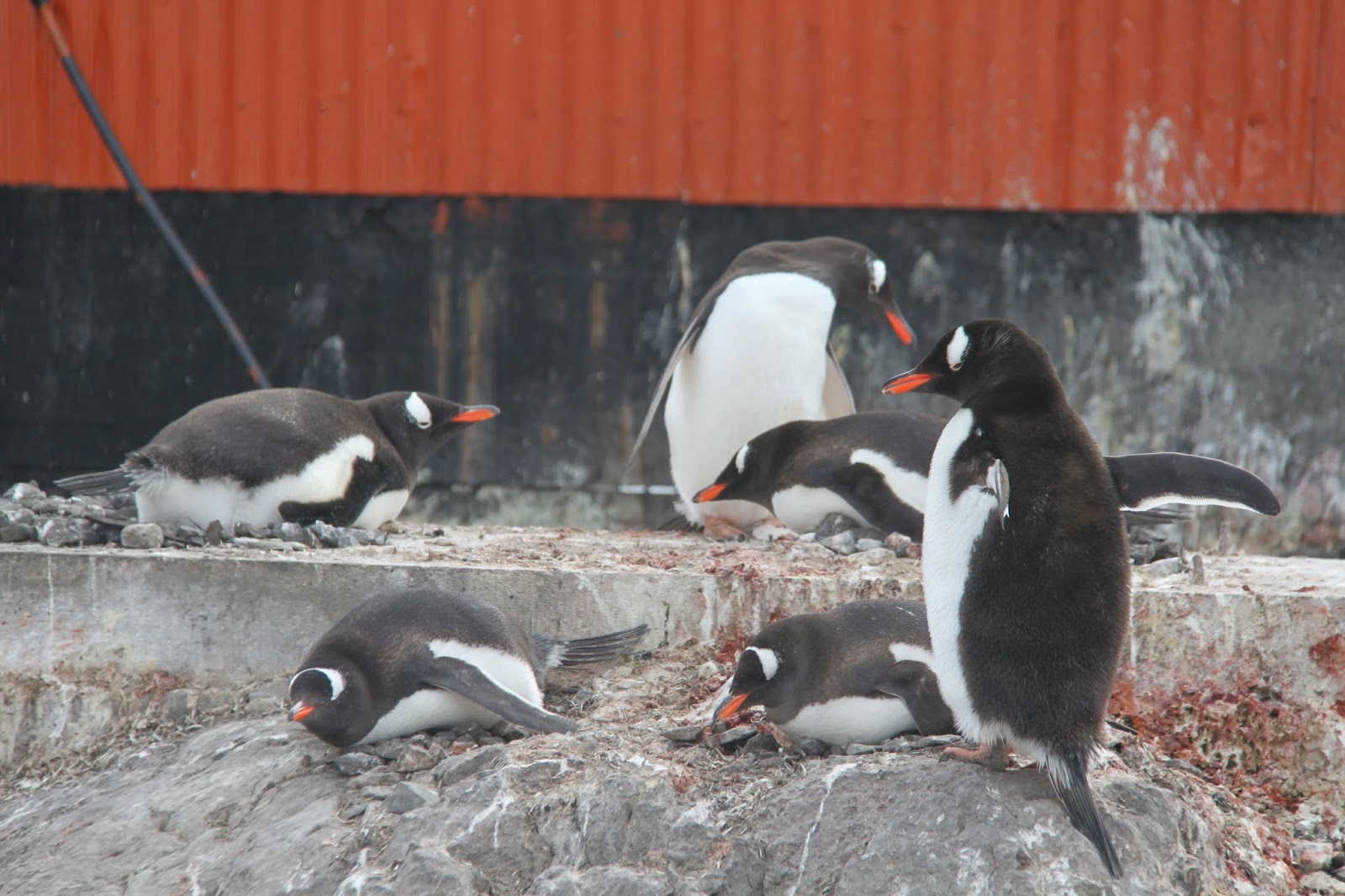Early 1900s whalers were so impressed with this stunning harbor that they called it Paradise, and with its amazing icebergs, beautiful reflections of the mountains and ice, glaciers calving into the water, gentoo penguin colony, shag nests in the cliffs, and many different seals on icebergs and rocks, it is an apt name. A large inlet of Andvord Bay, Paradise Harbor (a.k.a. Paradise Bay) is protected by the arc of Lemaire, Cramer and Bryde Islands (see a post on the Lemaire Channel here)
Source: Lonely Planet Antarctica 5th Edition 2012
http://en.wikipedia.org/wiki/Brown_Station
For intermittent periods from 1951 Argentina maintains a base here (Brown Station, formerly known as Almirante Brown) for meteorological and biology studies and campaigns to the interior, and had a very impressive scientific lab setup, but fed-up personnel supposedly started a fire in one of the buildings in 1984 so that they would have to be evacuated. An 8-person summer-only base (similar in nature to Port Lockroy) is used sporadically now, but the main creatures living on the site now are a colony of Gentoo penguins who live amongst the buildings. Over 100 different scientific studies were conducted by the Argentine Antarctic Institute in the areas of "biology, zoology, botany, biochemistry, animal and human physiology, pathology, bacteriology, weather, aurorae, environmental nuclear radiation, glaciology, oceanography, and ecology". Chile's Gonzalez Videla Base is also on the same harbor.
The view from the hill (84m) behind the station is spectacular. A broken memorial stone commemorates Jostein Helgestad who died in 1993 on a private expedition to the South Pole when his snowmobile went into a crevasse.
 |
| Blue-eyed shags and other sea birds love the red-tinted copper-rich cliffs around Brown Station |
http://en.wikipedia.org/wiki/Brown_Station








Thanks!
ReplyDelete